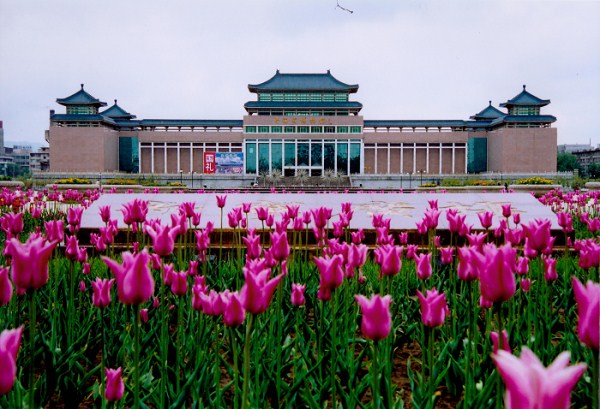Qinghai Museum

Qinghai Museum
青海省博物馆
Address: 58 Xiguan Street, Chengxi district, Xining, Qinghai province
Website: www.qhmuseum.cn (Cn)
Hours: 9:00-16:30 (summer); 9:00-16:00 (winter)
Closed Mondays
Admission: Free (Passports required for entry)

Qinghai Museum [Photo/qhmuseum.cn]
Located mostly on the Tibetan Plateau, Qinghai province has long been a melting pot for a number of ethnic groups including the Han, Tibetans, Hui, Tu, Mongols, and Salars. The Chinese name, “Qinghai”, comes from Qinghai Lake (cyan sea lake), the largest lake in China.
Qinghai Museum was first established in 1957 and opened to the public in September 1986. Covering an area of 17,000 square meters and a construction area of 20,800 sq m, it is a magnificent Tang-style simulation building with 10 halls and an exhibition area of 9,146 sq m. Its collection of cultural relics includes more than 14,932 pieces/sets and is characterized by colored pottery and relics from the new era that touch on things like religion, folklore, politics, economy, military affairs, production, and life.
Some of the important collections in the museum are the chipped stone tools from the Paleolithic Age, pottery and bronzewares from the Neolithic Age and the Bronze Age, the bronze mirror, the bronze warrior and inscriptions from the Han (206BC-220AD) and Tang dynasties (618-907), paper money and stone statues from the Yuan Dynasty (1271-1368), and porcelain and paintings from the Ming and the Qing dynasties (1368-1911).
Permanent exhibitions focus on different aspects of the region, including the local history of Qinghai dating back to the prehistoric era, the intangible cultural heritage of Qinghai province, thangka paintings, and gilt bronze and copper statues of Tibetan Buddhism. In the center of the thangka gallery is an impressive work of art - the polychrome sand mandala. These mandalas take a group of devoted lamas an entire month to finish. They use tubes and funnels to apply dyed sand in an elaborate pattern. Once completed, they are immediately erased in a ceremonial ritual symbolizing the ephemerality of life. However, this one is kept here for viewing.
Last Updated: Dec 04, 2018




